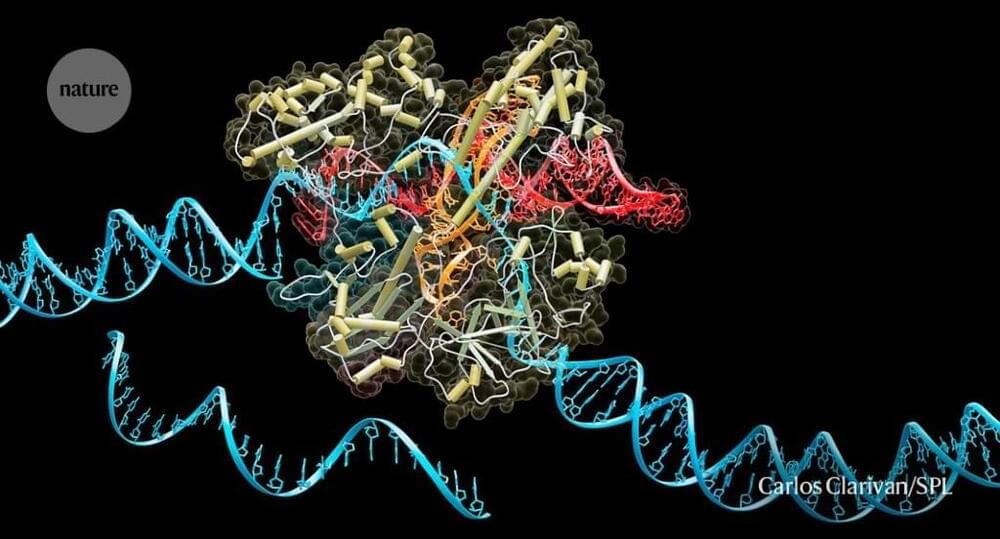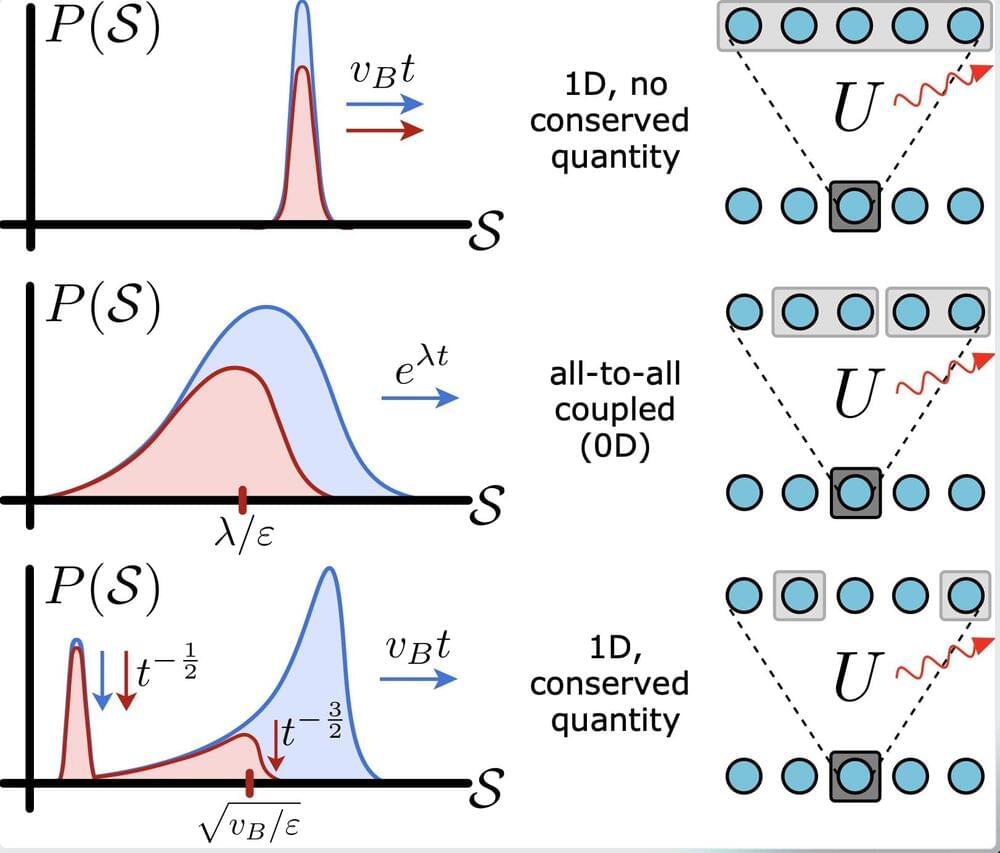An algorithm that can analyse hundreds of millions of genetic sequences has identified DNA-cutting genes and enzymes that are extremely rare in nature.



In recent years, physicists have been trying to better understand how quantum information spreads in systems of interacting particles—a phenomenon often referred to as “scrambling.” Scrambling in closed systems, physical systems that can only exchange energy with degrees of freedom within the system, is a characteristic feature of chaotic many-body quantum dynamics.
In open systems, which can exchange both energy and matter with their surroundings, scrambling is influenced by various additional factors, including noise and errors. While the effects of these additional influences are well-documented, leading for example to decoherence, how they affect scrambling remains poorly understood.
Two researchers from the University of California Berkeley (UC Berkeley) and Harvard University recently introduced a new framework, published in Physical Review Letters, that provides a universal picture for how information scrambling occurs in open quantum systems. Their framework offers a particularly simple viewpoint on how to understand and model the propagation of errors in an open quantum system and might already help to explain some previously puzzling observations gathered in magnetic resonance experiments.


Ultra-short laser pulses may allow us to measure entanglement in a way that answers questions about the quantum nature of the vacuum.

Various forms of heat pumps—refrigerators, air conditioners, heaters—are estimated to consume about 30 percent of the world’s electricity. And that number is almost certain to rise, as heat pumps play a very large role in efforts to electrify heating to reduce the use of fossil fuels.
Most existing versions of these systems rely on the compression of a class of chemicals called hydrofluorocarbons, gasses that were chosen because they have a far smaller impact on the ozone layer than earlier refrigerants. Unfortunately, they are also extremely potent greenhouse gasses, with a short-term impact several thousand times that of carbon dioxide.
Alternate technologies have been tested, but all of them have at least one major drawback in comparison to gas compression. In a paper released in today’s issue of Science, however, researchers describe progress on a form of heat pump that is built around a capacitor that changes temperature as it’s charged and discharged. Because the energy spent while charging it can be used on discharge, the system has the potential to be highly efficient.
ETH Zurich researchers deployed an autonomous excavator, called HEAP, to build a 6-meter-high and 65-meter-long dry-stone wall. The wall is embedded in a digitally planned and autonomously excavated landscape and park.
The team of researchers included Gramazio Kohler Research, the Robotics Systems Lab, Vision for Robotics Lab, and the Chair of Landscape Architecture. They developed this innovative design application as part of the National Center of Competence in Research for Digital Fabrication (NCCR dfab). Their work has been described in Science Robotics.
Using sensors, the excavator can autonomously draw a 3D map of the construction site and localize existing building blocks and stones for the wall’s construction. Specifically designed tools and machine vision approaches enable the excavator to scan and grab large stones in its immediate environment. It can also register their approximate weight as well as their center of gravity.

Tesla has made its original Roadster design and engineering “fully open source” and released R&D documents accessible to everyone.
The original Tesla Roadster hasn’t been in production for more than a decade now, and we are still waiting for the new generation that was unveiled all the way back in 2017 and has been delayed several times since.
The vehicle has become quite rare.
Q* appears to apply a RL technique that uses AI generated data and teaches LLMs how to solve multi step logic problems Q* techniques can be applied to GPT-5 endowing it with excellent reasoning and retrieval skills This may not be AGI but it is an extremely powerful LLM.
We’re on a journey to advance and democratize artificial intelligence through open source and open science.

To enhance their catalytic efficiency in degrading organic pollutants, such as RB and urea, researchers further functionalized the surface of the micromotors with laccase, the bio-catalytic counterpart, for the generation of ammonia from urea. Urea is an emerging contaminant, being a common pollutant from residential activities (urea is the main component of urine) and from different industrial processes.
The chemical component laccase accelerates the conversion of urea into ammonia upon contact with contaminated water. This ammonia can be transformed into hydrogen, which is a clean and sustainable energy source.
“This is an interesting discovery. Today, water treatment plants have trouble breaking down all the urea, which can result in eutrophication when the water is released. This is a serious problem in urban areas in particular,” says Rebeca Ferrer, a PhD student from Dr. Katherine Villa’s group at ICIQ.
